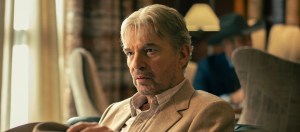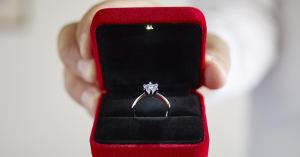Approaching the 20th anniversary of Princess Diana of Wales’ sudden death, she is, perhaps, more famous than ever.
This year brings the tales of her life and death to new heights, complete with exclusive interviews, rare footage and previously untold struggles of the royal’s complicated life.
Videos by PopCulture.com
Through the constant media coverage of Diana and her surviving family, we mourn the loss of this strong mother, grieve knowing she would have been a fierce-loving grandmother and wish the world could have experienced her charm and good heart longer.
But with these scenarios that’ll never come to fruition comes a question: could her death at 36 years old have been prevented? Could we ourselves have stopped it?
When the Mercedes transporting Diana crashed in the Pont de l’Alma road tunnel in Paris, France on August 31, 1997, it was determined by British police that she and lover Dodo al-Fayed were in the car to escape paparazzi at the Ritz hotel, owned by al-Fayed’s father. They were on their way to seek privacy at al-Fayed’s apartment, a destination they’d never reach.
Nearly 11 years after the incident, a British jury found that Diana and al-Fayed, as well as their driver Henri Paul, were killed as a result of the negligent driving of the chauffeur and of the photographers who chased them into the tunnel. The vehicles were traveling at twice the speed limit for that section of the road and Diana was not wearing a seatbelt.
Legally, the verdict read that the crash “was caused, or contributed to, by the speed and manner of the driver of the Mercedes and the speed and manner of the following vehicles,” according to The New York Times.
But as we often see, the legal explanations of an event may not tell the full story. The death of Diana, Princess of Wales, was caused by a Mercedes crashing into a pillar in Paris, being pursued by other vehicles. But those other vehicles had a motive—not to kill a royal, just to take her picture. And why were they taking her picture? To sell them for a profit, to be viewed by the rest of the world who fawns over any glimpse into lush, royal life.
So who were the real killers here? Some theorize that the Royal Family themselves orchestrated the event, though this seems unlikely and was dismissed as a possibility during trial. Was it the constant flashing lenses and reckless pursuit of a public figure by paparazzi that killed Diana? Or—if we’re being honest—was it us, the everyday people who demanded and treasured those blurry images of the ‘People’s Princess’?
It’s worth noting that Diana’s relationship with photographers and the media was multi-faceted and complicated.
At times, she seemed to be haunted by the shadowed figures following her day in and day out, snapping photos of what used to be her normal, private life.
On other occasions, Diana used her media connections to her advantage, famously working with English journalist Andrew Morton to publish Diana: Her True Story in 1992. The biography included striking details about her relationship with husband Prince Charles and her turbulent relationship with members of the royal family.
The Princess also allegedly flirted with photographers to push her own agenda, having them take the pictures she wanted people to see, says award-winning royal photographer Kent Gavin. He says she would often leak stories about herself or her charity work to the press to get her own message across.
Diana’s flirtation and manipulation of the British media may seem elitist, but they were going to publish stories and photos of her regardless of her influence. Why not make them favorable angles when she got the chance?
The paparazzi industry is one we don’t often think about, likely because the pushy individuals behind the camera aren’t invading our personal space, recklessly pursuing photos of our most private moments. But this ‘profession’ of chasing public figures to snap photos for a profit is real, and it’s dangerous.
French photographer Jean-Paul Dousset says he disposed of the paparazzi shots taken from the night of Diana’s death, tossing them down a sewer to prevent them from being published. He and other photographers and editors are speaking out for the first time in Diana and the Paparazzi, a documentary premiering later this month which depicts the royal’s relationship with the media.
For a woman who’d been paraded for her every move for over a decade, photos of her death being tossed down a sewer seems eerily parallel to a criminal ‘destroying the evidence’ of a murder. But was our hunger to feel connected to the Princess by seeing candid pictures of her doing mundane tasks their reason for persistently hunting her?
That hunger they so desperately felt the need to feed cost a woman her flawed, beautiful life.
Photo Credit: Getty / bettmann / Getty / Anwar Hussein








